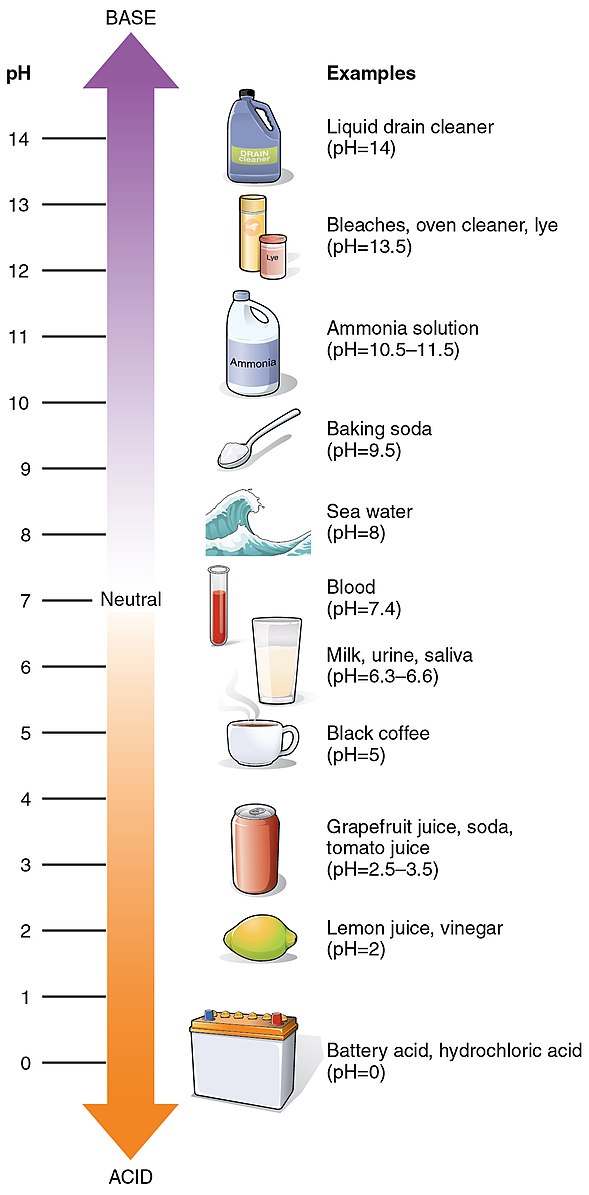The pH value of distilled water is typically around 6.4 to 7, but when aquarium salt is added, the pH can change due to the presence of ions. Aquarium salt, also known as marine salt or sea salt, is a mixture of various ions that can affect the water’s buffering capacity, making it essential to test and adjust the pH regularly.
Understanding Buffering Capacity
Distilled water has essentially no buffering capacity, meaning it is prone to rapid pH changes when acid or base is added. However, when aquarium salt is added to distilled water, it increases the water’s buffering capacity, making it more resistant to pH changes.
The optimal pH range for most aquarium fish is between 7.6 and 8.4. If the pH is too low, it can stress the fish and make them more susceptible to disease. On the other hand, if the pH is too high, it can lead to the precipitation of essential minerals, making the water unsuitable for fish.
Balancing the pH
 Image source: OpenStax College
Image source: OpenStax College
To balance the pH of distilled water with aquarium salt, it is essential to test the pH regularly and adjust it as needed. Here are some steps to help you maintain the optimal pH:
- Test the pH: Use a reliable pH test kit to measure the pH of the water regularly, especially after adding aquarium salt.
- Adjust the pH: If the pH is too low, you can add a small amount of baking soda or a commercial pH adjuster to raise the pH. Be sure to add it slowly and in small increments to avoid a rapid pH increase, which can be harmful to the fish.
- Monitor the pH: Continue to test the pH regularly and make adjustments as needed to maintain the optimal range of 7.6 to 8.4.
Contaminants and Chemicals
Distilled water with aquarium salt may contain contaminants and chemicals that can be harmful to fish and other aquatic organisms. These include chlorine, chloramines, heavy metals, and other dissolved solids.
To deal with these contaminants, you can use a water conditioner, such as Seachem Prime, to neutralize chlorine and chloramines. You can also use a reverse osmosis (RO) filter or a deionization (DI) filter to remove dissolved solids and heavy metals from the water. However, it is essential to note that RO and DI filters can also remove beneficial minerals, making it necessary to add a remineralization solution to the water before adding it to the aquarium.
Conclusion
The pH of distilled water with aquarium salt can range from 6.4 to 7, depending on the amount of aquarium salt added and the buffering capacity of the water. To balance the pH, it is essential to test the water regularly and adjust it as needed. Contaminants and chemicals that may be present in distilled water with aquarium salt can be harmful to fish and other aquatic organisms, making it essential to use high-quality aquarium salt and to test the water regularly for contaminants.
References:
- Using distilled water to top off my aquariums after they evaporate – FishLore Aquarium Fish Forum
- To lower GH and KH, how much distilled water can I safely add to the tank? – Reddit
- Beginner: Water Chemistry – Water Chemistry FAQ
- Distilled Water | The Planted Tank Forum
- Distilled water and pH | REEF2REEF Saltwater and Reef Aquarium Forum
